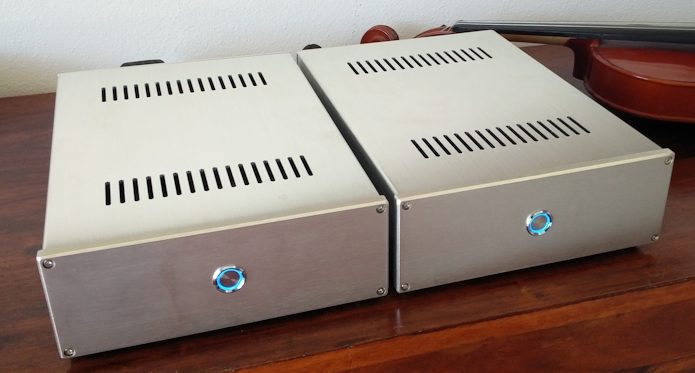After a few years of very satisfying use of the prestigious Naim Nait 5i, I became nostalgic for Unison Research, an Italian brand of which before Naim I had a rare integrated amplifier, the beautiful Mood. The Nait is very good, of course, but I had a feeling (and maybe it remains so) that it was a little bit in trouble in giving back the total dynamics with the difficult load of my TDL Studio 0.5 loudspeakers. The Naim shouldn’t have these problems, and in fact it didn’t sound bad at all. But in 2024 I had the opportunity to make another swap at par and resell it for an amount comparable to buying a Unico and, on the occasion of my 60th birthday, I gave myself a present.
This time I was able to compare the two amplifiers before the Naim went to a friend. They seemed to be a good match.
It may well be that the Nait 5i is more correct during music fulls, but I am not sure. Build quality is impeccable in both but the Unison has something extra. In particular the rear binding posts (8 in the case of bi-wiring) are of very high quality, where the Naim had two simple banana inputs.
In short, this is a side-grade for sure, but for me it is also a small upgrade, even a sentimental one: I have returned to the TDL-Unison pairing that proved successful in the 1990s.
I remember when I bought the TDLs they recommended amplifiers capable of big currents, including the Nait of the time. But I ended up getting the Unison Research Mood, which had plenty to spare. When I went to a hi-fi shop and told them I had TDLs connected to a Mood, they looked at me approvingly, saying it was one of the few amplifiers that could drive them really well. And that’s the feeling I have today when I listen to the Unico wrangling the 86 dB sensitivity and 6 ohm nominal load of my TDL Studio 0.5s.

The quality of the inputs and outputs in the rear section of the Unico does not make you regret that of the Mood
Unison Research is a company from Veneto that is mostly famous for its very refined tube amplifiers. In the past they had fancied with transistor integrated amps including the Mood, which I had for years. I believe the Unico replaces their solid-state experiment, but it is a hybrid, with tubes in the pre section and mosfets in the power section, for 80 w of output power.
The first Unico came out under the name ‘Unico I’, which was followed, I think in the mid-2000s, by the Unico in my possession, flanked by the Unico P (I think because of the phono card, optional on the other). From the serial number it seems that mine is a 2012 specimen. Today the second version of the Unico Primo is in production.
Actually, some class-D power amplifiers with an astonishing price/quality ratio, the ZeroZone IRS2092, have recently appeared on the market. At the unbelievable price of around 300 euros per pair, the little Chinese big boys promise to outperform much more renowned competitors! Their fame is spreading like wildfire and it seems that even the end section of a Supernait is no match for them! Maybe one day I’ll get a prestigious preamp to optimally feed a pair of power amps like these incredible jewels…
ZeroZone IRS2092 tested on TNT-Audio


